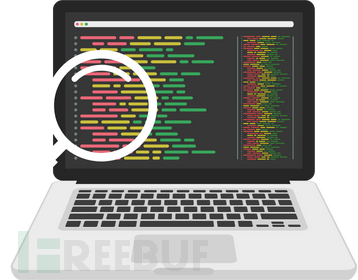电力 电塔电线缺陷检测数据集 10000张 带标注 voc yolo
电力电塔电线缺陷检测数据集
数据集描述
该数据集旨在用于电力电塔和电线的缺陷检测任务,涵盖多种常见的缺陷类型。数据集包含了大量的图像及其对应的标注信息,可用于训练计算机视觉模型,以识别和定位电力设施中的各种缺陷。
数据规模
数据集共有9838张图像,标注了44520个缺陷对象。
类别及数量
数据集中的类别及数量如下:
- 绑扎不规范:3717张图像,标注了14510个对象。
- 并线线夹保护壳缺失:3317张图像,标注了11285个对象。
- 耐张线夹保护壳缺失:3748张图像,标注了16148个对象。
- 横杆腐蚀:987张图像,标注了1556个对象。
- 塔头损坏:972张图像,标注了1021个对象。
标注格式

数据集中的标注信息采用了VOC(Visual Object Classes)格式,每个图像都有一个对应的XML文件,记录了每个对象的位置信息(边界框坐标)和类别标签。此外,也可以选择YOLO格式的标注文件(TXT文件),方便使用YOLO系列模型进行训练。
数据集结构
典型的数据集目录结构如下:
1power_tower_defect_detection_dataset/
2├── Annotations/
3│ ├── img_0001.xml
4│ ├── img_0002.xml
5│ └── ...
6├── ImageSets/
7│ ├── Main/
8│ │ ├── train.txt
9│ │ ├── val.txt
10│ │ └── test.txt
11├── JPEGImages/
12│ ├── img_0001.jpg
13│ ├── img_0002.jpg
14│ └── ...
15└── labels/
16 ├── train/
17 │ ├── img_0001.txt
18 │ ├── img_0002.txt
19 └── val/
20 ├── img_0001.txt
21 ├── img_0002.txt应用场景
该数据集可以用于以下应用场景:
- 缺陷检测与分类:训练模型识别电力电塔和电线中的不同缺陷类型。
- 故障诊断:实时监测电力设施中的异常情况,提高故障诊断效率。
- 预防性维护:辅助电力公司的预防性维护计划,减少因缺陷导致的停电事故。
- 科研分析:用于研究电力设施缺陷的发生规律和发展趋势。
示例代码
以下是一个使用Python和相关库(如OpenCV、PyTorch等)来加载和展示数据集的简单示例代码:
1import os
2import cv2
3import xml.etree.ElementTree as ET
4from PIL import Image
5import numpy as np
6
7# 数据集路径
8dataset_path = 'path/to/power_tower_defect_detection_dataset/'
9
10# 加载图像和标签
11def load_image_and_label(image_path, annotation_path):
12 # 读取图像
13 image = Image.open(image_path).convert('RGB')
14 # 解析XML文件
15 tree = ET.parse(annotation_path)
16 root = tree.getroot()
17 objects = []
18 for obj in root.findall('object'):
19 name = obj.find('name').text
20 bbox = obj.find('bndbox')
21 xmin = int(bbox.find('xmin').text)
22 ymin = int(bbox.find('ymin').text)
23 xmax = int(bbox.find('xmax').text)
24 ymax = int(bbox.find('ymax').text)
25 objects.append([xmin, ymin, xmax, ymax, name])
26 return image, objects
27
28# 展示图像
29def show_image_with_boxes(image, boxes):
30 img = np.array(image)
31 for box in boxes:
32 xmin, ymin, xmax, ymax, name = box
33 cv2.rectangle(img, (xmin, ymin), (xmax, ymax), (0, 255, 0), 2)
34 cv2.putText(img, name, (xmin, ymin - 10), cv2.FONT_HERSHEY_SIMPLEX, 0.5, (0, 255, 0), 2)
35 cv2.imshow('Image with Boxes', img)
36 cv2.waitKey(0)
37 cv2.destroyAllWindows()
38
39# 主函数
40if __name__ == "__main__":
41 images_dir = os.path.join(dataset_path, 'JPEGImages')
42 annotations_dir = os.path.join(dataset_path, 'Annotations')
43
44 # 获取图像列表
45 image_files = [f for f in os.listdir(images_dir) if f.endswith('.jpg')]
46
47 # 随机选择一张图像
48 selected_image = np.random.choice(image_files)
49 image_path = os.path.join(images_dir, selected_image)
50 annotation_path = os.path.join(annotations_dir, selected_image.replace('.jpg', '.xml'))
51
52 # 加载图像和标签
53 image, boxes = load_image_and_label(image_path, annotation_path)
54
55 # 展示带有标注框的图像
56 show_image_with_boxes(image, boxes)这段代码展示了如何加载图像和其对应的VOC XML标注文件,并在图像上绘制边界框和类别标签。您可以根据实际需求进一步扩展和修改这段代码,以适应您的具体应用场景。如果您需要将VOC格式的标注转换为YOLO格式,可以参考以下转换示例:
示例代码:从VOC格式转换为YOLO格式
python
深色版本
1import os
2import xml.etree.ElementTree as ET
3import shutil
4
5# 数据集路径
6dataset_path = 'path/to/power_tower_defect_detection_dataset/'
7
8# VOC标注文件目录
9voc_annotations_dir = os.path.join(dataset_path, 'Annotations')
10# 输出YOLO标签文件目录
11yolo_labels_dir = os.path.join(dataset_path, 'labels')
12
13# 创建YOLO标签目录
14os.makedirs(yolo_labels_dir, exist_ok=True)
15
16# 复制VOC图像集划分文件到YOLO目录
17for split in ['train', 'val']:
18 shutil.copy(os.path.join(dataset_path, 'ImageSets/Main/{}.txt'.format(split)), os.path.join(yolo_labels_dir, '{}.txt'.format(split)))
19
20# 从VOC格式转换为YOLO格式
21def convert_voc_to_yolo(voc_path, yolo_path, width, height):
22 with open(voc_path, 'r') as infile:
23 tree = ET.parse(infile)
24 root = tree.getroot()
25 objects = []
26 for obj in root.findall('object'):
27 name = obj.find('name').text
28 bbox = obj.find('bndbox')
29 xmin = int(bbox.find('xmin').text)
30 ymin = int(bbox.find('ymin').text)
31 xmax = int(bbox.find('xmax').text)
32 ymax = int(bbox.find('ymax').text)
33 x_center = (xmin + xmax) / 2.0
34 y_center = (ymin + ymax) / 2.0
35 w = xmax - xmin
36 h = ymax - ymin
37 x_center /= width
38 y_center /= height
39 w /= width
40 h /= height
41 objects.append([name, x_center, y_center, w, h])
42
43 with open(yolo_path, 'w') as outfile:
44 for obj in objects:
45 line = f"{obj[0]} {obj[1]} {obj[2]} {obj[3]} {obj[4]}\n"
46 outfile.write(line)
47
48# 主函数
49if __name__ == "__main__":
50 # 获取VOC标注文件列表
51 voc_files = [f for f in os.listdir(voc_annotations_dir) if f.endswith('.xml')]
52
53 # 遍历VOC文件并转换为YOLO格式
54 for voc_file in voc_files:
55 # 获取图像尺寸
56 image_file = os.path.join(dataset_path, 'JPEGImages', voc_file.replace('.xml', '.jpg'))
57 image = Image.open(image_file)
58 width, height = image.size
59
60 # 转换并保存YOLO标签文件
61 yolo_file = os.path.join(yolo_labels_dir, voc_file.replace('.xml', '.txt'))
62 convert_voc_to_yolo(os.path.join(voc_annotations_dir, voc_file), yolo_file, width, height)这段代码展示了如何将VOC格式的标注文件转换为YOLO格式的标签文件,方便使用YOLO系列模型进行训练。您可以根据实际需求进一步扩展和修改这段代码,以适应您的具体应用场景。



















